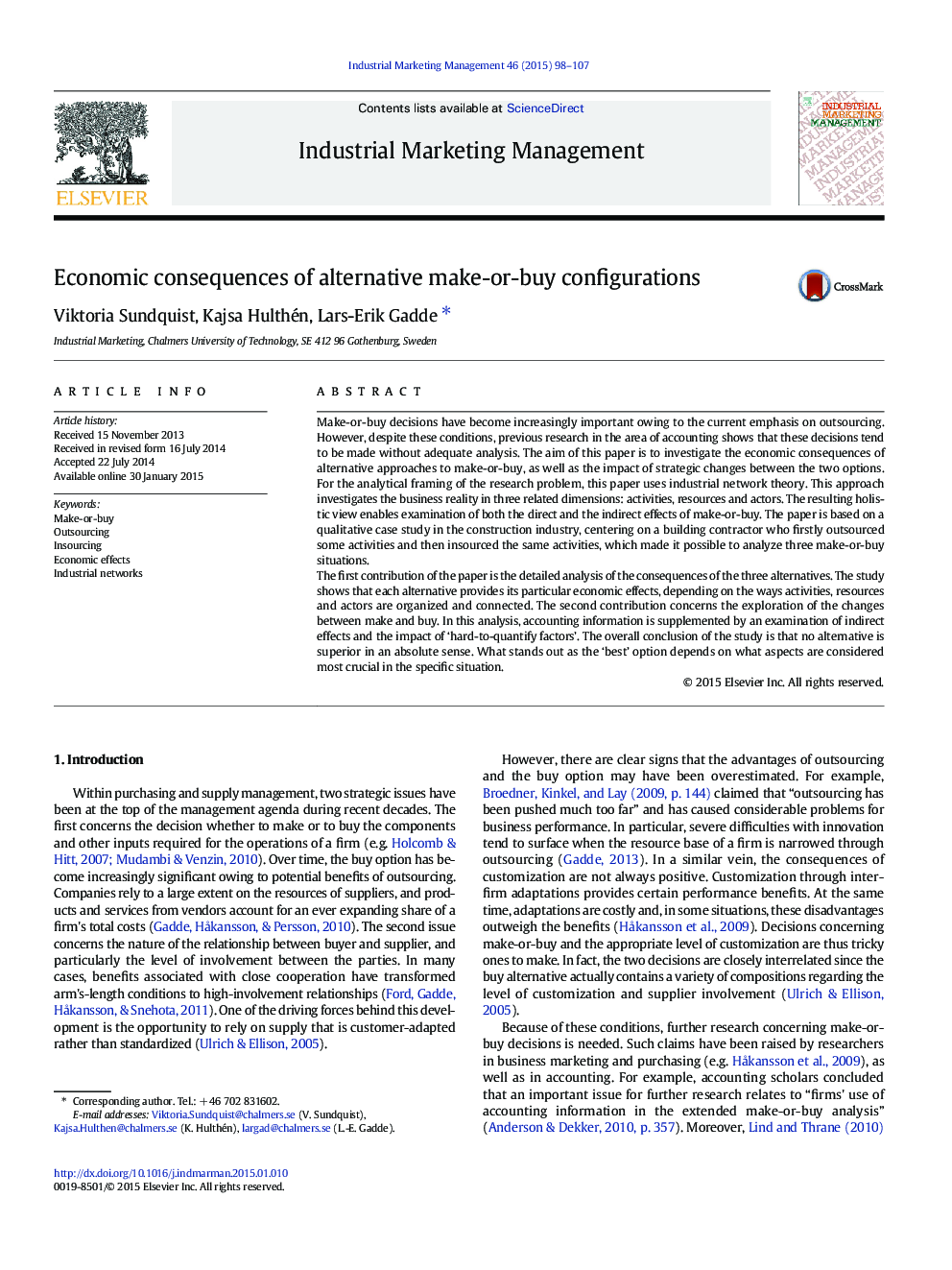| Article ID | Journal | Published Year | Pages | File Type |
|---|---|---|---|---|
| 1027485 | Industrial Marketing Management | 2015 | 10 Pages |
•Evaluation of the economic consequences of supply strategies requires that indirect effects are taken into consideration.•Managers are highly focused on cutting costs without thinking of the impact of other ‘hard-to-quantify’ factors.•No alternative is superior in an absolute sense — what is ‘best’ depends on which aspects are considered most crucial.•Increased attention must be given to accounting in relationships and networks.•Sensibility to sunk costs interferes with the consideration of alternative courses of action.
Make-or-buy decisions have become increasingly important owing to the current emphasis on outsourcing. However, despite these conditions, previous research in the area of accounting shows that these decisions tend to be made without adequate analysis. The aim of this paper is to investigate the economic consequences of alternative approaches to make-or-buy, as well as the impact of strategic changes between the two options. For the analytical framing of the research problem, this paper uses industrial network theory. This approach investigates the business reality in three related dimensions: activities, resources and actors. The resulting holistic view enables examination of both the direct and the indirect effects of make-or-buy. The paper is based on a qualitative case study in the construction industry, centering on a building contractor who firstly outsourced some activities and then insourced the same activities, which made it possible to analyze three make-or-buy situations.The first contribution of the paper is the detailed analysis of the consequences of the three alternatives. The study shows that each alternative provides its particular economic effects, depending on the ways activities, resources and actors are organized and connected. The second contribution concerns the exploration of the changes between make and buy. In this analysis, accounting information is supplemented by an examination of indirect effects and the impact of ‘hard-to-quantify factors’. The overall conclusion of the study is that no alternative is superior in an absolute sense. What stands out as the ‘best’ option depends on what aspects are considered most crucial in the specific situation.
